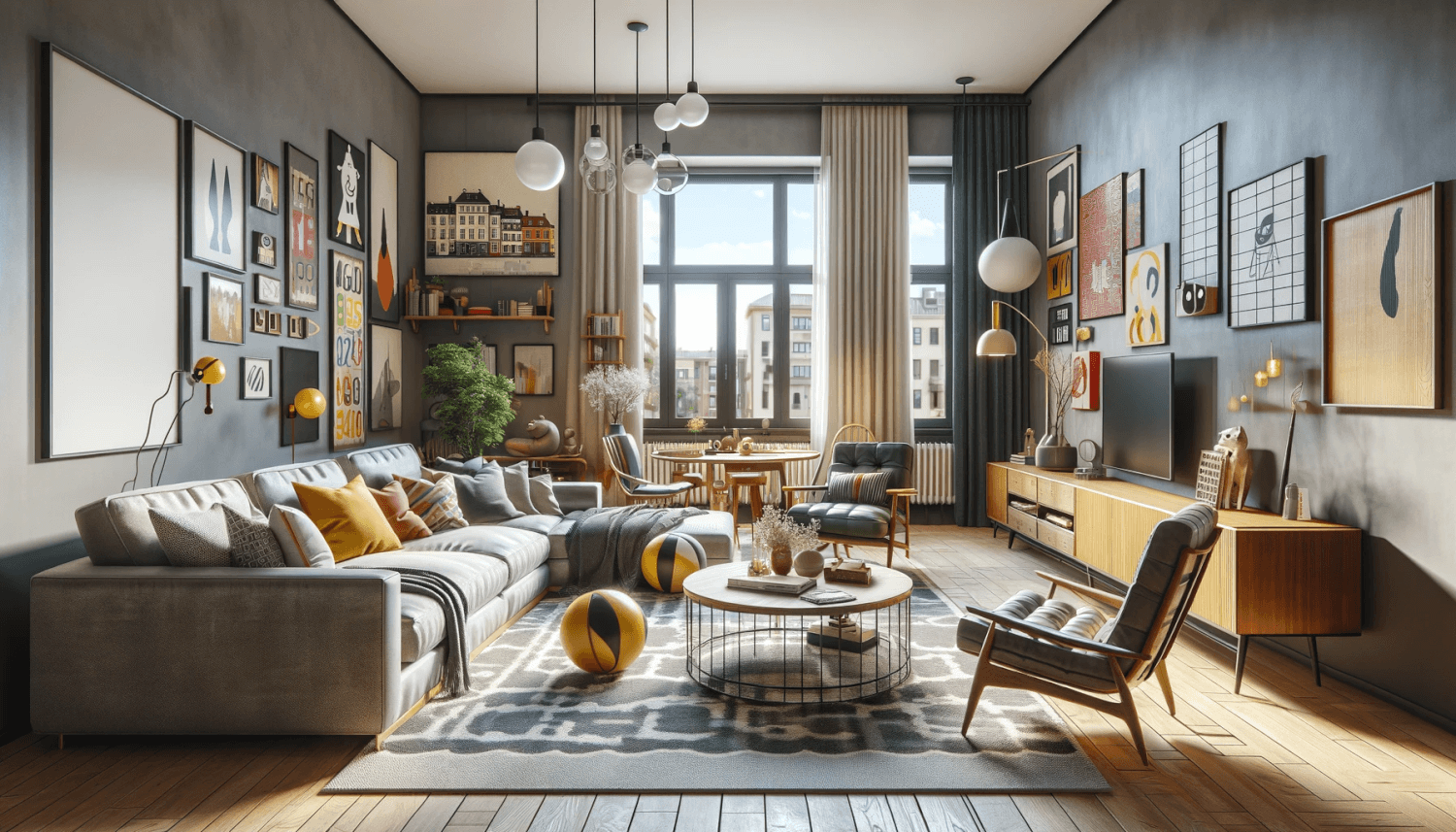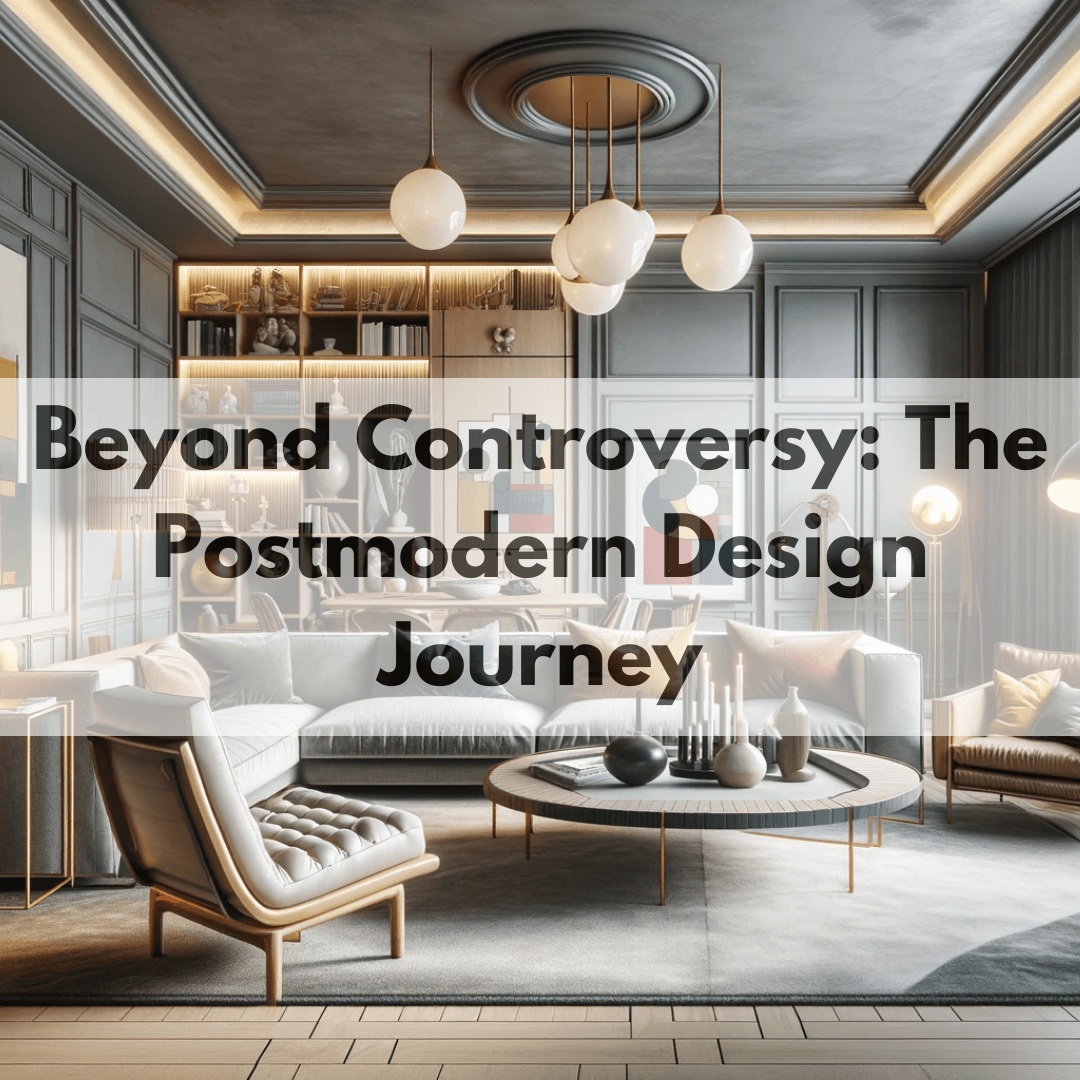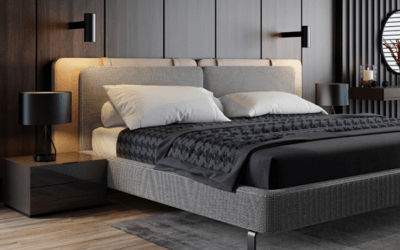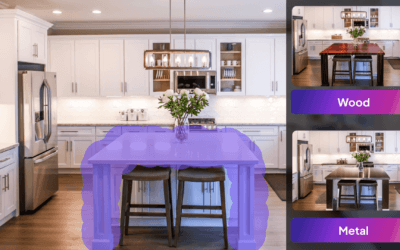Postmodern interior design, known for its eclectic and unconventional approach, emerged as a bold counter-movement to the minimalist ethos of modernism. Characterized by its playful integration of diverse styles and unexpected forms, postmodern design breaks free from traditional design constraints. It offers a more expressive approach to interior spaces. This article delves into the rich tapestry of postmodern design, tracing its historical roots, exploring its key characteristics, and seeing how you can integrate it into your own house.

History and Evolution of Postmodern Design
Postmodern design emerged in the late 20th century as a vibrant counter-movement to the strict functionalism of modernism. It was born out of a desire for greater expression and diversity in design, reflecting the era’s broader cultural and social changes. The origins of postmodernism lie in the 1960s and 70s, a period marked by social upheaval and a questioning of traditional values. Architects like Robert Venturi and Philip Johnson led the charge against modernism’s “less is more” ethos, advocating for a more eclectic and playful approach. Venturi’s assertion that “less is a bore” encapsulated this new direction.
Postmodernism introduced a playful mix of styles and historical references, breaking away from modernism’s uniformity. This approach was characterized by bold, decorative elements, vibrant colors, and varied textures, offering a fresh perspective on architectural design. As it evolved, postmodern design embraced global influences and advanced technology. That led to innovative designs that blended traditional elements with new materials and methods. This period saw postmodernism’s expansion beyond the Western world, absorbing diverse cultural influences.
If you want to know more about Postmodern design, Art History 101 explains it better in the video below.
Key Characteristics of Postmodern Interior Design
Postmodern interior design is a complex and eclectic style, characterized by its departure from the strict rules of modernism. It embraces a playful and experimental approach, often mixing different styles and elements. Here are five key characteristics that define postmodern interior design:
- Eclecticism: Postmodern design is known for its eclectic approach. It often combines elements from different time periods and styles, creating a unique and sometimes whimsical aesthetic. This can include mixing traditional furnishings with contemporary art or blending industrial materials with classical motifs.
- Bold Colors and Patterns: Unlike the neutral and subdued palette of modernism, postmodern design embraces bold and vibrant colors. Patterns are often used in a daring and unconventional way, adding visual interest and dynamism to spaces.
- Playful and Ironic Details: A sense of playfulness is a hallmark of postmodern design. This can manifest in ironic or whimsical details, such as oversized or exaggerated forms, or the use of unconventional materials and decorative elements.
- Diverse Textures and Materials: Postmodernism doesn’t shy away from mixing a variety of textures and materials. This can include the juxtaposition of glossy and matte finishes, or the combination of luxurious fabrics with industrial metals.
- Asymmetry and Unconventional Forms: Asymmetry and unexpected forms are common in postmodern design. This might include irregularly shaped furniture, unconventional layouts, or architectural elements that challenge traditional notions of balance and proportion.
Integrating Postmodern Style into Your Home
Blending postmodern style with modern homes requires a thoughtful approach. It’s about creating a space that reflects individuality without compromising on comfort and functionality. For those looking to infuse their homes with postmodern flair, technology offers a helping hand.
Platforms like HomeDesigns AI are revolutionizing the way we approach interior design. With our platform, you can visualize how postmodern elements can transform your space. The platform’s features allow you to experiment with different design ideas, ensuring that the final outcome resonates with your personal style.
This feature lets you explore how postmodern design can be integrated into your existing space, offering a range of possibilities from subtle to bold transformations.
For those looking to infuse their spaces with the essence of postmodern design, you can use the Beautiful/Creative Redesign feature. The Beautiful Redesign mode offers a more realistic transformation, while the Creative Redesign mode is ideal for those seeking a more dramatic change.
For those who desire a more hands-on approach to their design, Precision+ is the perfect feature. It allows you to fine-tune specific elements of your postmodern design, from adjusting the placement of avant-garde art pieces to experimenting with unconventional furniture layouts.
Starting from an empty room or looking to add new elements to your design? You can use the Fill Spaces feature. It suggests furniture and decor items that resonate with the postmodern theme, ensuring a cohesive and visually stimulating environment.
Conclusion
As you embark on your postmodern design journey, remember that it’s an opportunity to infuse your home with a sense of fun, freedom, and personal expression. Let the vibrant and diverse nature of postmodern design inspire you to create a space that’s not just a reflection of current trends but a true extension of your individuality and artistic flair.









